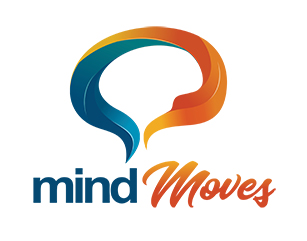Are you addicted to your thinking?

Mindfulness and presence are huge buzzwords at the moment. What do they mean and how do you achieve them? How can you become present and experience your ‘presence’ without thinking about being present? Are you a slave to your mind?
My focus in the last few weeks has been on developing my presence. I have developed the habit of an active mind which I refer to as my ‘hamster head’. You’ve seen it – the wee hamster treading away in her wheel, often at speed. This serves me well much of the time as I have the ability to achieve and get things done. I also know that I’ve got the skills to quiet my mind as these are what I use in my work when I’m training and coaching others, and it would be nice to access more of this when I’m not in front of clients. This is my current project. I’ve come to realise I’m a slave to my mind and I’m addicted to thinking, so how do I break the cycle of this addiction while maintaining my ability to achieve and get things done?
The serendipities happened last week. Several newsletters I subscribe to randomly appear in my email ‘in’ box. One arrived last week that got me thinking (uh-oh – I’m not supposed to be doing so much of that!) L. Michael Hall, Executive Director of Neurosemantics is penning a series of blogs focusing on ‘Getting over the Past’. He refers to the present being the only thing that exists and that’s why we can only live there. However we allow the past to live within us, which has been and gone and we allow ourselves to imagine the future, which is not real because it hasn’t happened yet. The past lives in us as experiences and learnings which we encode into habits or responses and can be used as resources or cause us to be unresourceful, for example, useful resources such as learning to drive or ride a bike, and not useful resources such as fearing heights or public speaking. Yet we sometimes spend more time in the past or future, than we do in the here and now. In his August 20, 2018 blog he asks the question, if you were to divide up the past, present and future into percentages, how much do you devote to each aspect? What are your numbers?
When I did this exercise as I reflected on my day, I found I had invested much of my time in the past and future and only 20% of my time in the here and now. No wonder I’ve been bouncing around and feeling as though I’m not achieving. He suggests estimating how much time we spend each day mentally and emotionally living in the past, the present and the future. So I did. In my journal at the end of each day, I’ve been drawing a pie chart indicating where I’ve invested my valuable mental energy. For me, once I see what my pattern is, visually, I get a picture of how I’m tracking that will support me in making the changes I choose to, that is more presence in the here and now.
It was serendipitous also to come across this You Tube clip of Eckhart Tolle talking about getting ‘present’ and how to increase the amount of time that we live in the now which I found it very helpful. Another tool I’m using daily is focusing on my breathing. Noticing the in-breath and the out-breath and ensuring that I am breathing in for the same count that I’m breathing out. It’s called balanced breathing and I’ll talk more about that another time.
The other experience I finally made time for was visiting the Jam Tse Dhargyey Ling Tibetan Buddhist centre north of Whangarei to invest some time in contemplation and listen to a teaching. What a beautiful peaceful space to allow oneself to simply ‘be’ and experience the joy of sitting atop of a mountain.
Slowly I am releasing the shackles of my mind and freeing myself to enjoy the here and now. Where do you invest your valuable mental energy each day?
References:
Hall, L. Michael. Getting over the Past Series (#1). Getting over the Past. 2018 Neurons #35, August 20, 2018. www.neurosemantics.com
Hall, L. Michael. Getting over the Past Series (#2). How the Past Lives Today and What you can do About it. 2018 Neurons #36, August 27,2018. www.neurosemantics.com
